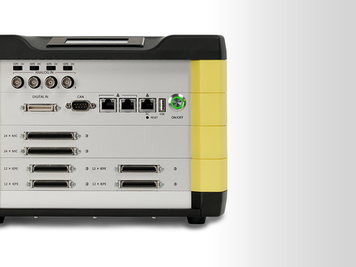In analogy to optics, where the focus is the focal length of a lens, we define the focus as the distance between the microphone array and the object under investigation. The determination of the focus is important in order to accurately calculate the level(s) of the located source(s). Particularly for measurements on objects with uneven surfaces, e.g. an engine block, the distance between the microphones of the array and the structure under investigation can vary from about 10 cm up to 1 m and more. The more detailed the investigated structure the higher the requirements on the precision of the determination of the focus.
In practice, different shapes of microphone arrays show different sensitivities towards an imprecise determination of the focus. Figure 1 illustrates the error of the sound pressure level (SPL) as a function of the estimated focus for a sound source (white noise 0.1 – 20 kHz) placed at 1 m distance. The results are depicted for ring, sphere and spiral arrays of different sizes.
The ring array is particularly robust regarding an imprecise determination of the focus which makes it a good choice for measurements on structures with uneven surfaces. For the spiral arrays however, a 10% deviation from the “true” distance results in a 1 dB error. Generally, the level differences increase towards higher frequencies.
The problems resulting from a great variance of distances may be dealt with by executing the beamforming algorithm based on a 3D-CAD model, where the focus is determined for each point of the model.





